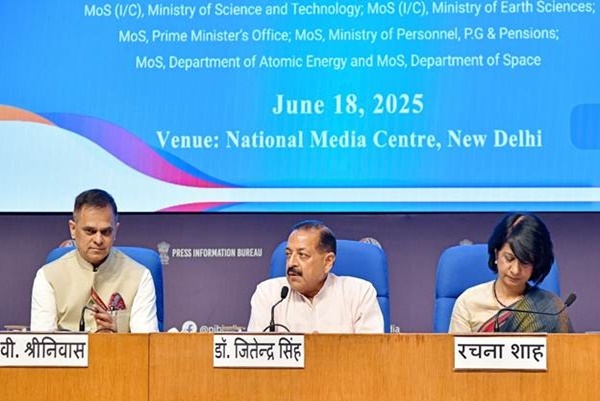
Key Reforms for Central Government Employees
Minister of State for the Ministry of Personnel, Public Grievances and Pensions, Dr. Jitendra Singh, has unveiled significant changes to the retirement benefits for Central government employees under the Unified Pension Scheme. Effective immediately, these employees will now be eligible for both retirement and death gratuity benefits, marking a pivotal shift in social security provisions. The announcement, made during a press conference commemorating the 11th anniversary of the NDA government, underscores the administration’s dedication to addressing long-standing demands from public sector workers. By aligning benefits with those of other government categories, the reform aims to create a more equitable retirement framework. This move is expected to alleviate financial uncertainties for thousands of employees, particularly those nearing retirement age. The government’s emphasis on parity in benefits reflects a broader strategy to enhance employee welfare and ensure long-term financial stability for retirees and their families. As part of the National Pension System, these reforms are designed to provide a safety net that complements existing social security measures, reinforcing the government’s commitment to employee welfare.
Administrative Reforms and Technological Integration
Dr. Singh highlighted the government’s efforts to modernize administrative processes, emphasizing the role of technology in improving governance and public services. Over the past decade, the administration has prioritized digitization to streamline operations and reduce bureaucratic delays. This includes the implementation of online portals for pension claims, vacancy management, and grievance redressal, which have significantly enhanced transparency and efficiency. The reforms have not only addressed logistical challenges but also fostered a culture of accountability and responsiveness. By leveraging technology, the government has created a more accessible and user-friendly system for employees, reducing the administrative burden on both staff and citizens. These initiatives align with Prime Minister Narendra Modi’s vision of a digitally empowered India, where public services are delivered with greater speed and accuracy. The integration of technology has also enabled real-time monitoring of pension disbursements, ensuring timely and accurate payments to retirees. This technological advancement is a cornerstone of the government’s strategy to enhance public trust and operational efficiency.
Socio-Cultural Impact of Policy Reforms
Beyond administrative improvements, the reforms carry profound socio-cultural implications, addressing the needs of a diverse workforce across India’s federal structure. Dr. Singh emphasized that the changes reflect a commitment to inclusivity, ensuring that all categories of employees, regardless of their location or position, receive equal treatment under the law. The government’s focus on social security has also extended to rural and remote areas, where access to pensions and benefits was previously limited. By expanding eligibility criteria, the policy aims to bridge the gap between urban and rural employees, promoting a more balanced approach to welfare. Additionally, the reforms have been designed to support families of deceased employees, providing financial stability during times of crisis. This holistic approach to employee welfare underscores the government’s vision of a compassionate and equitable society. The emphasis on social security is not just a policy initiative but a reflection of the administration’s dedication to fostering a resilient and empowered workforce.
Legacy of Governance and Future Prospects
The 11-year tenure of the NDA government has been characterized by transformative policies that have redefined the landscape of public administration. Dr. Singh noted that the reforms initiated during this period have had far-reaching effects, influencing not only governance but also the socio-economic fabric of the nation. The government’s focus on administrative efficiency has reduced corruption and improved service delivery, setting a benchmark for future administrations. Looking ahead, the emphasis on continuous improvement and innovation suggests that the government remains committed to adapting to the evolving needs of its workforce. The recent expansion of retirement benefits is a testament to this ongoing commitment, ensuring that employees are recognized for their contributions throughout their careers. As the government continues to refine its policies, the focus on transparency, equity, and technological advancement will remain central to its strategy. These efforts are expected to strengthen public confidence and lay a foundation for sustainable growth in the years to come.
Empowering Employees Through Policy Innovation
The recent changes to the Unified Pension Scheme represent a significant milestone in the government’s efforts to empower its employees and ensure their long-term security. By addressing the backlog of vacancies and streamlining administrative processes, the government has created a more efficient and responsive system. The integration of technology has further enhanced the accessibility of these benefits, allowing employees to manage their pensions with greater ease. This proactive approach to policy innovation not only improves the quality of life for current employees but also sets a precedent for future reforms. The emphasis on social security and equitable treatment reflects a broader vision of a government that prioritizes the well-being of its citizens. As the administration continues to implement these measures, the focus on transparency, efficiency, and inclusivity will remain critical to its success. The legacy of these reforms will be felt for years to come, shaping a more secure and empowered workforce across the nation.




